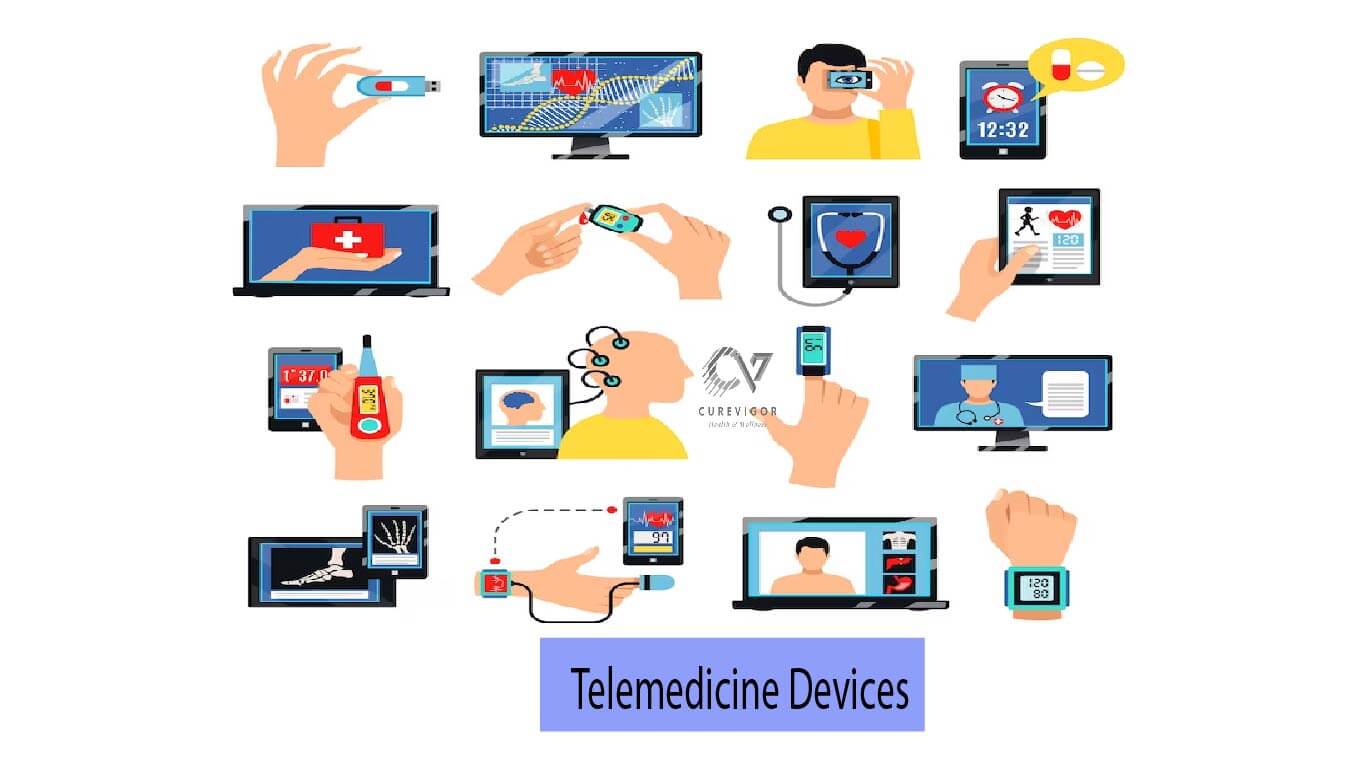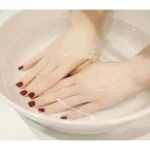Upgrade your health toolbox! Dive into the top 7 telemedicine devices that empower you to monitor, analyze, and manage your health from the comfort of your home. From smartwatches tracking your heart rhythm to portable labs checking your blood sugar, these innovative tools put you in control of your well-being. Embrace the future of healthcare with convenient, personalized, and proactive solutions.
Contents
- 1 Top 7 Telemedicine Devices for a Remote Revolution
- 2 The Mighty Smartwatch
- 3 The All-Seeing Smart Scale
- 4 The Temperature Tamer
- 5 The Home-Based Lab
- 6 Telemedicine Software
- 7 Telemedicine kiosks
- 8 Digital Camera
- 9 The Virtual Doc’s Toolkit
- 10 Final Thoughts
- 11 Conclusion
- 12 Telehealth Device FAQs: Answers to Your Burning Questions
Top 7 Telemedicine Devices for a Remote Revolution
Telemedicine transforms healthcare, directly bringing the doctor’s office to your living room. But with so many devices available, choosing the right one can feel overwhelming. Fear not, fellow health enthusiasts! This blog post dives into the top 5 telemedicine devices that empower you to take control of your health from anywhere, anytime.
The Mighty Smartwatch

This pocket-sized powerhouse is more than just a timepiece. Easily track your heart rate, blood pressure, oxygen saturation, and sleep patterns. Many even boast built-in ECG capabilities, offering insights into your heart rhythm. Imagine getting real-time feedback on your workout or catching a potential health issue before it develops. Talk about proactive healthcare!
- Heart Rate Hero: Track your heart rate throughout the day and during workouts, identifying resting heart rate trends, potential arrhythmias, and stress responses. Imagine getting alerted to an elevated heart rate during a presentation, allowing you to take a mindful breath and manage stress in real-time.
- Sleep Sleuth: Analyze your sleep patterns and uncover insights into sleep stages, wakefulness periods, and overall quality. This data can help you optimize your sleep hygiene for better rest and energy levels.
- Blood Oxygen Buddy: Monitor your blood oxygen saturation, an indicator of how well your red blood cells carry oxygen. It can help those with respiratory issues or monitor athletic performance. Consider the target audience and prioritize important information with clear, brief sentences. Eliminate extras, use simple language, and opt for an active voice.
- ECG Explorer (Advanced Models): Gain deeper insights into your heart rhythm with built-in ECG capabilities. One of the benefits of using technology is detecting arrhythmias and monitoring potential heart issues.
The All-Seeing Smart Scale

Ditch the weight-watching woes with a smart scale. Step on and receive a detailed body composition analysis, including weight, body fat percentage, muscle mass, and even bone density. Monitor your progress toward your fitness goals or identify potential health trends with this insightful companion.
- Composition Connoisseur: Go beyond just weight tracking. Analyze your body composition by measuring body fat percentage, muscle mass, and bone density. Monitor muscle gain progress, track overweight loss trends, and identify potential health risks associated with high body fat or declining bone density.
- Hydration Guru (Advanced Models): Some models analyze bioelectrical impedance to estimate your hydration levels, helping you stay optimally hydrated for peak performance and overall well-being.
- Trend Tracker: Track your body composition measurements over time, visualize progress, and identify areas for improvement. This data can inform personalized fitness and nutrition strategies.
The Temperature Tamer

Say goodbye to the mercury mess! Smart thermometers provide accurate and instant temperature readings, perfect for keeping tabs on fevers or monitoring your overall health. Some even boast features like automatic syncing with your health app and reminders for medication intake—a small device with a significant impact on your well-being.
- Fever Fighter: Get accurate and instant temperature readings, eliminating the need for clumsy mercury thermometers. It is beneficial for monitoring fevers in children or quickly assessing potential health issues.
- Travel-Friendly: Smart thermometers are compact and portable for travel or on-the-go health monitoring.
- App Integration (Advanced Models): Some models seamlessly sync with your health app, automatically recording temperatures and providing insights into trends. Imagine receiving alerts if your temperature deviates significantly from your baseline.
- Medication Reminder (Advanced Models): Advanced models can provide medication reminders, ensuring you never miss a dose.
The Home-Based Lab
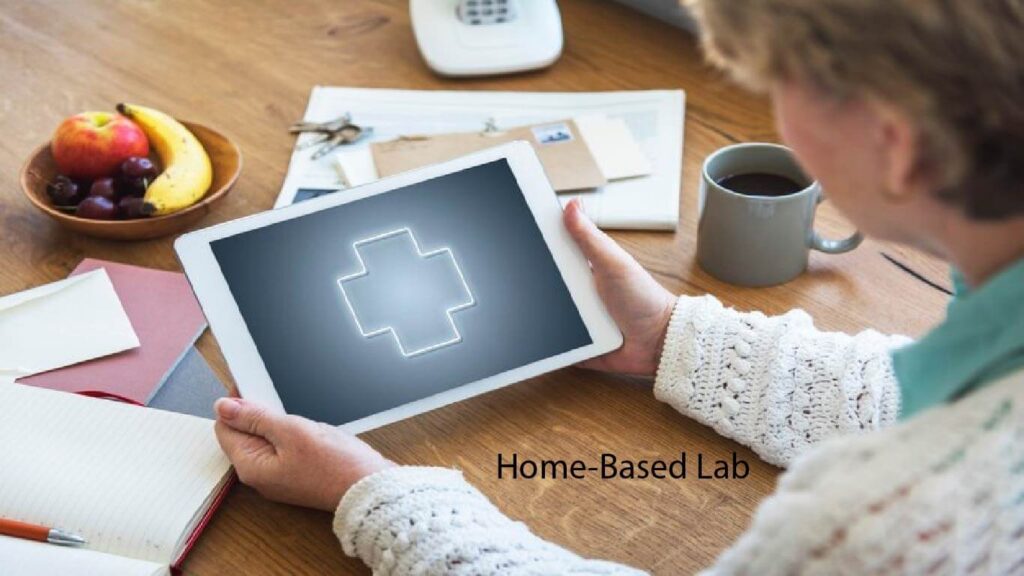
No more lab trips! Portable blood glucose monitors allow you to check your sugar levels at home conveniently. Some even offer blood pressure and cholesterol monitoring capabilities, giving you a comprehensive picture of your health. This level of self-monitoring empowers you to make informed decisions about your diet and lifestyle.
- Blood Glucose Boss: Conveniently monitor your blood sugar levels at home, eliminating the need for frequent lab visits. The technology enables individuals with diabetes to manage their condition effectively by making informed decisions about their diet and medication.
- Multi-Talented Testers (Advanced Models): Some monitors offer expanded capabilities, measuring blood pressure, cholesterol levels, and even ketones. This comprehensive health picture allows you to address potential health concerns and optimize your overall well-being proactively.
- Data-Driven Decisions: Monitor your blood sugar and other health indicators to detect patterns and make informed healthcare decisions with your doctor.
Telemedicine Software
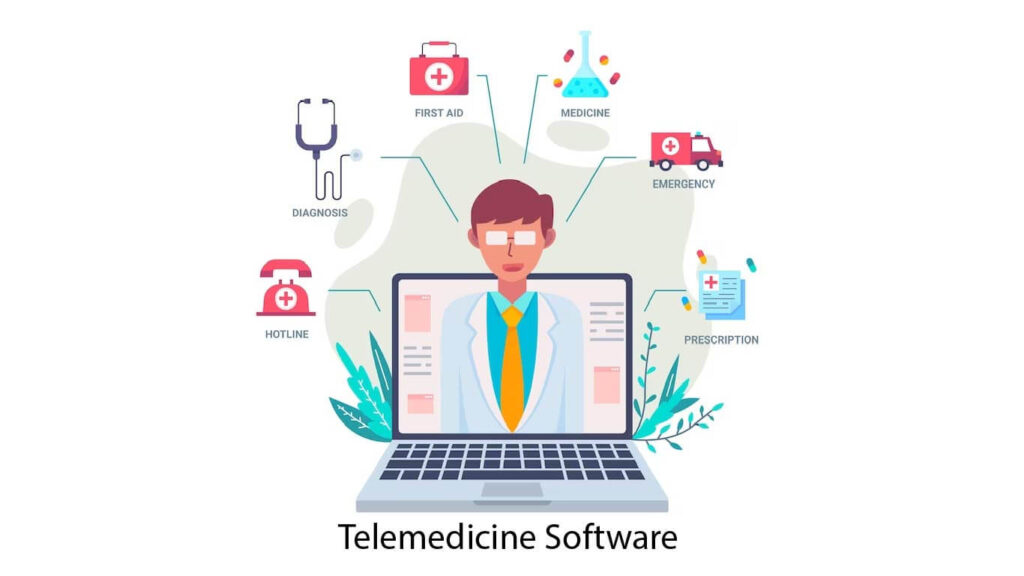
Regarding telemedicine services, it’s important to note that different providers may have varying requirements for software installation. Some providers may require you to install specific software systems on your medical practice’s computers to be able to use their services. Before proceeding with the installation of any software, it’s crucial to check the compatibility of your equipment to ensure that it can support the new system without any hiccups. Patients and providers can suffer from delays in patient care and frustration due to incompatible systems.
Additionally, it’s worth noting that some providers may require multiple keys for different purposes, such as encryption or authentication. Encryption keys protect patient data, and authentication keys verify user identity. Understand your telemedicine provider’s security requirements to comply with and keep data safe.
Regarding telemedicine, it’s best to choose an all-in-one solution to avoid complications. Choose a provider that can meet your telemedicine needs without requiring you to use multiple software programs or providers. It will streamline your workflow, reduce the risk of errors, and improve patient care.
Telemedicine kiosks
Telemedicine kiosks are gaining popularity in the healthcare industry as more companies and retail clinics provide telemedicine solutions to their patients. These kiosks resemble photobooths and are fully equipped with essential medical devices such as blood pressure cuffs, thermometers, and ECG monitors required for telemedicine sessions.
These kiosks provide a convenient and accessible way for patients to receive healthcare services, particularly in areas with limited access to medical facilities. Large corporations and retail clinics typically purchase these kiosks to expand their healthcare offerings to their employees and pharmacy customers. The stalls are easy to use and provide a user-friendly interface, allowing patients to connect with healthcare professionals in real time. As a result, it is both cost-effective and efficient for patients and healthcare providers.
Digital Camera

Technological advancements have introduced secure video conferencing apps that have transformed the healthcare industry. These apps have enabled patients to connect with doctors, specialists, and therapists from the comfort of their homes, offering them the flexibility to receive quality medical attention regardless of their location.
Patients can now easily discuss their health concerns, receive diagnoses, and even get prescriptions with just a few clicks. This approach to healthcare saves valuable time and resources and has helped to overcome geographic barriers, making healthcare more accessible and inclusive for all.
The Virtual Doc’s Toolkit
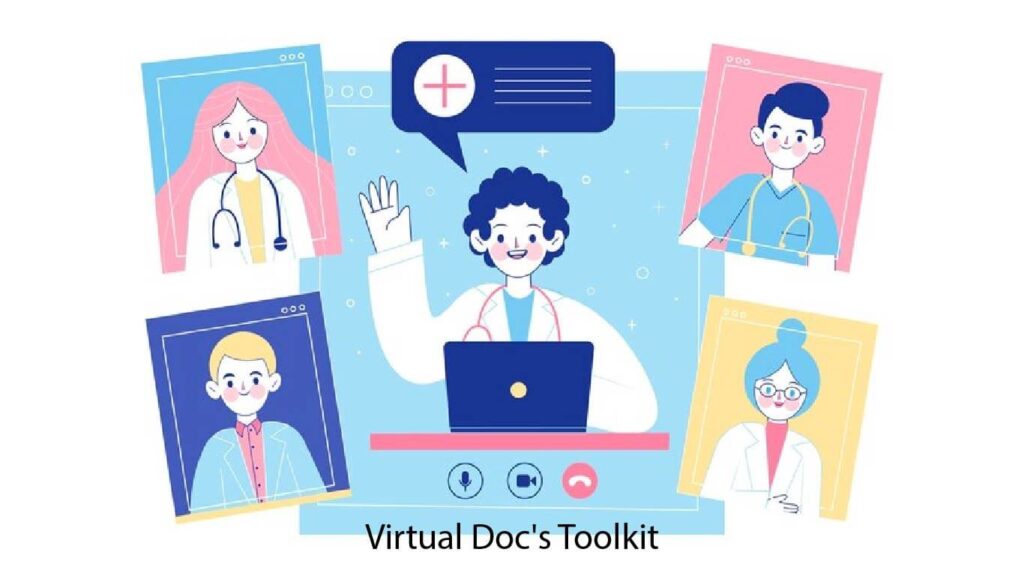
- Telehealth Triumphant: Connect with doctors, specialists, and therapists from your home. The approach saves time on travel, enhances accessibility, and enables more frequent consultations.
- Visual Diagnosis: Share live video and images of your symptoms or concerns, enhancing communication and allowing for more accurate diagnoses.
- Prescription Power (Limited Availability): Certain platforms allow for secure prescription writing and delivery, further streamlining the healthcare experience.
- Mental Health Matters: Teletherapy sessions provide convenient access to mental health professionals, helping individuals manage stress, anxiety, and other concerns.
Final Thoughts
Telemedicine isn’t just a trend; it’s a transformation. These devices are more than gadgets; they are powerful allies in your health journey. They help you collect data, understand your body, and make informed decisions about your well-being. Embrace the possibilities, experiment with different devices, and build a personalized health arsenal that puts you in control. Remember, knowledge is power; with the right tools, you can navigate the exciting landscape of proactive healthcare.
Conclusion
The future of healthcare is here, and it’s accessible, convenient, and empowering. So, ditch the doctor’s office waiting rooms and embrace the telemedicine revolution. Invest in the devices that resonate with your needs, explore their capabilities, and embark on a journey of self-discovery and proactive health management. With every measurement, every analysis, and every virtual consultation, you move closer to a healthier, happier you.
Telehealth Device FAQs: Answers to Your Burning Questions
Q. What devices are used in telemedicine?
- Smartphones and tablets: These devices allow video conferencing with doctors and access to health apps.
- Computers: Laptops or desktops offer larger screens and better video quality for consultations and accessing online patient portals.
- Smartwatches and fitness trackers: Wearables can monitor vital signs remotely, including heart rate, blood pressure, and oxygen saturation.
- Portable medical devices: Devices like blood glucose meters, thermometers, and spirometers can collect and share health data remotely.
- Telehealth kiosks: These specialized kiosks offer all-in-one solutions for remote consultations, often found in pharmacies or community centers.
Q: What are the three peripheral devices used in telehealth?
- Webcams: Essential for video consultations, allowing doctors and patients to see each other face-to-face.
- Headsets and microphones: Enhancing audio quality for clear communication during consultations.
- Medical peripherals: It is possible to connect devices like stethoscopes, otoscopes, and dermatoscopes to remote physical examinations.
Q: How does telemedicine work?
Telemedicine relies on a combination of hardware and software. The hardware includes:
- Patient-facing devices: Patients use smartphones, tablets, computers, wearables, and medical peripherals to collect and share data.
- Provider-facing devices: Healthcare professionals use computers, specialized telehealth platforms, and medical peripherals for consultations and data analysis.
- Network Infrastructure: Secure internet connections and video conferencing platforms that enable real-time communication between patients and providers.
Q. What are the four telehealth technologies?
- Video conferencing: Enabling real-time face-to-face consultations with healthcare professionals.
- Mobile health (mHealth): Wearables and apps that track health data and connect patients with providers remotely.
- Electronic health records (EHRs): Secure platforms for storing and sharing patient medical information.
- Telemonitoring: Continuous monitoring of vital signs and health data using remote devices.
Q: How is the IoT used in telemedicine?
IoT (Internet of Things) plays a growing role in telemedicine by:
- Connecting medical devices: Smart devices like blood pressure monitors or pill dispensers can automatically send data to healthcare providers, enabling remote monitoring and proactive care.
- Remote patient monitoring: Wearable technology and sensors can continuously monitor vital signs and activity levels, enabling early detection of health issues and prevention measures.
- Improved medication adherence: Smart medication reminders and pill dispensers can improve treatment outcomes by helping patients stay on track with their medications.
Q: What is the best telehealth device?
There’s no single “best” telehealth device, as it depends on individual needs and preferences. Consider factors like:
- Your health needs: Choose devices that track the data relevant to your health concerns.
- Budget: Options range from affordable smartphones to more expensive specialized devices.
- Ease of use: Look for machines with intuitive interfaces and user-friendly features.
- Compatibility: Ensure your chosen devices work with your preferred telehealth platform or software.
Q: What is the most used telehealth platform?
Several popular telehealth platforms cater to different needs and demographics. Do your research to find a venue that aligns with your provider’s network, features, and user interface. Some famous examples include the following:
- Doctor on Demand: Focuses on on-demand video consultations with various specialists.
- Teladoc Health: Include a wide range of options such as remote consultations, management of chronic diseases, and support for mental health consultations.
- MDLive: MD Live provides affordable access to doctors and specialists via video consultations.
- Amwell: A comprehensive platform with video visits, mental health services, and chronic disease management tools.
Read more articles on Health and Wellness.
You might like to read:
HealthTech Revolution: A Glimpse into the Future of Healthcare

